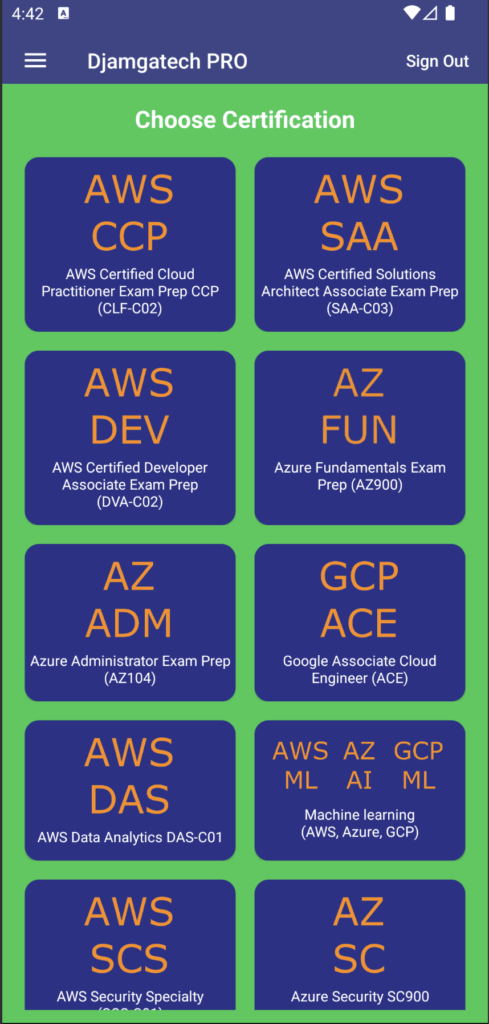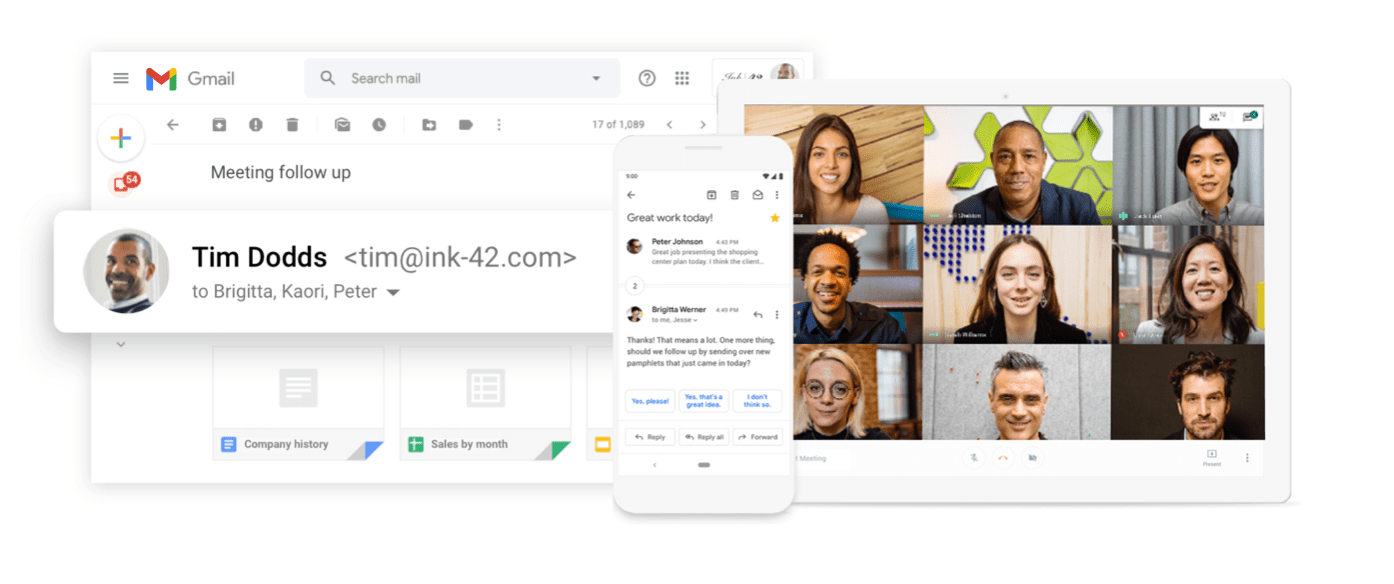AWS Certification Preparation: AWS IAM Facts, Faqs, Summaries and Top 10 Questions and Answers Dump
AWS IAM Facts and summaries, AWS IAM Top 10 Questions and Answers Dump
Definition 1:
IAM is a framework of policies and technologies for ensuring that the proper people in an enterprise have the appropriate access to technology resources. IdM systems fall under the overarching umbrella of IT security and Data Management .
Definition 2:
AWS Identity and Access Management (IAM) is a web service that helps you securely control access to AWS resources. You use IAM to control who is authenticated (signed in) and authorized (has permissions) to use resources.
AWS IAM Facts and summaries

![]()
![]()
![]()
![]()
![]()




![]()
![]()
![]()
![]()
- You can use AWS IAM to securely control individual and group access to your AWS resources. You can create and manage user identities (“IAM users”) and grant permissions for those IAM users to access your resources. You can also grant permissions for users outside of AWS ( federated users).
- How do users call AWS services?
Users can make requests to AWS services using security credentials. Explicit permissions govern a user’s ability to call AWS services. By default, users have no ability to call service APIs on behalf of the account. - What kinds of security credentials can IAM users have?
IAM users can have any combination of credentials that AWS supports, such as an AWS access key, X.509 certificate, SSH key, password for web app logins, or an MFA device. - What is the access level for newly created regular users in AWS?
Default deny to all resources and actions
By default, all new AWS users lack ANY access to AWS resources with a default deny. That default deny doesn’t prevent an explicit allow to grant them access. Keep in mind that EXPLICT denys override explicit allows.
What is identity federation?
AWS Identity and Access Management (IAM) supports identity federation for delegated access to the AWS Management Console or AWS APIs. With identity federation, external identities are granted secure access to resources in your AWS account without having to create IAM users. These external identities can come from your corporate identity provider (such as Microsoft Active Directory or from the AWS Directory Service) or from a web identity provider (such as Amazon Cognito, Login with Amazon, Facebook, Google, or any OpenID Connect-compatible provider).
Does AWS IAM support SAML?
Yes, AWS supports the Security Assertion Markup Language (SAML) 2.0.
What SAML profiles does AWS support?
The AWS single sign-on (SSO) endpoint supports the IdP-initiated HTTP-POST binding WebSSO SAML Profile. This enables a federated user to sign in to the AWS Management Console using a SAML assertion. A SAML assertion can also be used to request temporary security credentials using the AssumeRoleWithSAML API. For more information, see About SAML 2.0-Based Federation.
- Can a temporary security credential be revoked prior to its expiration?
No. When requesting temporary credentials, we recommend the following:- When creating temporary security credentials, set the expiration to a value that is appropriate for your application.
- Because root account permissions cannot be restricted, use an IAM user and not the root account for creating temporary security credentials. You can revoke permissions of the IAM user that issued the original call to request it. This action almost immediately revokes privileges for all temporary security credentials issued by that IAM user
- Can I reactivate or extend the expiration of temporary security credentials?
No. It is a good practice to actively check the expiration and request a new temporary security credential before the old one expires. This rotation process is automatically managed for you when temporary security credentials are used in roles for EC2 instances.
What does a policy look like?
The following policy grants access to add, update, and delete objects from a specific folder, example_folder, in a specific bucket, example_bucket.- What is the IAM policy simulator?
The IAM policy simulator is a tool to help you understand, test, and validate the effects of your access control policies. - What can the policy simulator be used for?
You can use the policy simulator in several ways. You can test policy changes to ensure they have the desired effect before committing them to production. You can validate existing policies attached to users, groups, and roles to verify and troubleshoot permissions. You can also use the policy simulator to understand how IAM policies and resource-based policies work together to grant or deny access to AWS resources. - Is there an authentication API to verify IAM user sign-ins?
No. There is no programmatic way to verify user sign-ins. - Can users SSH to EC2 instances using their AWS user name and password?
No. User security credentials created with IAM are not supported for direct authentication to customer EC2 instances. Managing EC2 SSH credentials is the customer’s responsibility within the EC2 console. - Are IAM actions logged for auditing purposes?
Yes. You can log IAM actions, STS actions, and AWS Management Console sign-ins by activating AWS CloudTrail. To learn more about AWS logging, see AWS CloudTrail. - What is AWS MFA?
AWS multi-factor authentication (AWS MFA) provides an extra level of security that you can apply to your AWS environment. You can enable AWS MFA for your AWS account and for individual AWS Identity and Access Management (IAM) users you create under your account.
What problems does IAM solve?
IAM makes it easy to provide multiple users secure access to your AWS resources. IAM enables you to:
Manage IAM users and their access: You can create users in AWS’s identity management system, assign users individual security credentials (such as access keys, passwords, multi-factor authentication devices), or request temporary security credentials to provide users access to AWS services and resources. You can specify permissions to control which operations a user can perform.
Manage access for federated users: You can request security credentials with configurable expirations for users who you manage in your corporate directory, allowing you to provide your employees and applications secure access to resources in your AWS account without creating an IAM user account for them. You specify the permissions for these security credentials to control which operations a user can perform.
- What is an IAM role?
An IAM role is an IAM entity that defines a set of permissions for making AWS service requests. IAM roles are not associated with a specific user or group. Instead, trusted entities assume roles, such as IAM users, applications, or AWS services such as EC2. - What problems do IAM roles solve?
IAM roles allow you to delegate access with defined permissions to trusted entities without having to share long-term access keys. You can use IAM roles to delegate access to IAM users managed within your account, to IAM users under a different AWS account, or to an AWS service such as EC2.
Top
Reference: AWS IAM FaqsAWS IAM Top 10 Questions and Answers Dump
Q0: What are the main benefits of IAM groups? (Select two)
- A. The ability to create custom permission policies.
- B. Assigning IAM permission policies to more than one user at a time.
- C. Easier user/policy management.
- D. Allowing EC2 instances to gain access to S3.
TopQ1: You would like to use STS to allow end users to authenticate from third-party providers such as Facebook, Google, and Amazon. What is this type of authentication called?
- A. Web Identity Federation
- B. Enterprise Identity Federation
- C. Cross-Account Access
- D. Commercial Federation
TopQ2:
IAM Policies, at a minimum, contain what elements?- A. Id
- B. Sid
- C. Actions
- D. Effects
- E. Principals
- F. Resources
TopQ3: What are benefits of using AWS STS?
- A. Grant access to AWS resources without having to create an IAM identity for them
- B. Since credentials are temporary, you don’t have to rotate or revoke them
- C. Temporary security credentials can be extended indefinitely
- D. Temporary security credentials can be restricted to a specific region
Q4: Your mobile application includes a photo-sharing service that is expecting tens of thousands of users at launch. You will leverage Amazon Simple Storage Service (S3) for storage of the user Images, and you must decide how to authenticate and authorize your users for access to these images. You also need to manage the storage of these images. Which two of the following approaches should you use? Choose two answers from the options below
- A. Create an Amazon S3 bucket per user, and use your application to generate the S3 URL for the appropriate content.
- B. Use AWS Identity and Access Management (IAM) user accounts as your application-level user database, and offload the burden of authentication from your application code.
- C. Authenticate your users at the application level, and use AWS Security Token Service (STS)to grant token-based authorization to S3 objects.
- D. Authenticate your users at the application level, and send an SMS token message to the user. Create an Amazon S3 bucket with the same name as the SMS message token, and move the user’s objects to that bucket.
TopQ5: You’ve developed a Lambda function and are now in the process of debugging it. You add the necessary print statements in the code to assist in the debugging. You go to Cloudwatch logs , but you see no logs for the lambda function. Which of the following could be the underlying issue for this?
- A. You’ve not enabled versioning for the Lambda function
- B. The IAM Role assigned to the Lambda function does not have the necessary permission to create Logs
- C. There is not enough memory assigned to the function
- D. There is not enough time assigned to the function
Q6: Your application must write to an SQS queue. Your corporate security policies require that AWS credentials are always encrypted and are rotated at least once a week.
How can you securely provide credentials that allow your application to write to the queue?- A. Have the application fetch an access key from an Amazon S3 bucket at run time.
- B. Launch the application’s Amazon EC2 instance with an IAM role.
- C. Encrypt an access key in the application source code.
- D. Enroll the instance in an Active Directory domain and use AD authentication.
TopQ65: A corporate web application is deployed within an Amazon VPC, and is connected to the corporate data center via IPSec VPN. The application must authenticate against the on-premise LDAP server. Once authenticated, logged-in users can only access an S3 keyspace specific to the user. Which of the solutions below meet these requirements? Choose two answers How would you authenticate to the application given these details? (Choose 2)
- A. The application authenticates against LDAP, and retrieves the name of an IAM role associated with the user. The application then calls the IAM Security Token Service to assume that IAM Role. The application can use the temporary credentials to access the S3 keyspace.
- B. Develop an identity broker which authenticates against LDAP, and then calls IAM Security Token Service to get IAM federated user credentials. The application calls the identity broker to get IAM federated user credentials with access to the appropriate S3 keyspace
- C. Develop an identity broker which authenticates against IAM Security Token Service to assume an IAM Role to get temporary AWS security credentials. The application calls the identity broker to get AWS temporary security credentials with access to the app
- D. The application authenticates against LDAP. The application then calls the IAM Security Service to login to IAM using the LDAP credentials. The application can use the IAM temporary credentials to access the appropriate S3 bucket.
TopQ7:
A corporate web application is deployed within an Amazon VPC, and is connected to the corporate data center via IPSec VPN. The application must authenticate against the on-premise LDAP server. Once authenticated, logged-in users can only access an S3 keyspace specific to the user. Which of the solutions below meet these requirements? Choose two answers
How would you authenticate to the application given these details? (Choose 2)- A. The application authenticates against LDAP, and retrieves the name of an IAM role associated with the user. The application then calls the IAM Security Token Service to assume that IAM Role. The application can use the temporary credentials to access the S3 keyspace.
- B. Develop an identity broker which authenticates against LDAP, and then calls IAM Security Token Service to get IAM federated user credentials. The application calls the identity broker to get IAM federated user credentials with access to the appropriate S3 keyspace
- C. Develop an identity broker which authenticates against IAM Security Token Service to assume an IAM Role to get temporary AWS security credentials. The application calls the identity broker to get AWS temporary security credentials with access to the app
- D. The application authenticates against LDAP. The application then calls the IAM Security Service to login to IAM using the LDAP credentials. The application can use the IAM temporary credentials to access the appropriate S3 bucket.
TopQ8:
- A.
- B.
- C.
- D.
TopQ9:
- A.
- B.
- C.
- D.
TopQ10:
- A.
- B.
- C.
- D.
TopOther AWS Facts and Summaries and Questions/Answers Dump
- AWS S3 facts and summaries and Q&A Dump
- AWS DynamoDB facts and summaries and Questions and Answers Dump
- AWS EC2 facts and summaries and Questions and Answers Dump
- AWS Serverless facts and summaries and Questions and Answers Dump
- AWS Developer and Deployment Theory facts and summaries and Questions and Answers Dump
- AWS IAM facts and summaries and Questions and Answers Dump
- AWS Lambda facts and summaries and Questions and Answers Dump
- AWS SQS facts and summaries and Questions and Answers Dump
- AWS RDS facts and summaries and Questions and Answers Dump
- AWS ECS facts and summaries and Questions and Answers Dump
- AWS CloudWatch facts and summaries and Questions and Answers Dump
- AWS SES facts and summaries and Questions and Answers Dump
- AWS EBS facts and summaries and Questions and Answers Dump
- AWS ELB facts and summaries and Questions and Answers Dump
- AWS Autoscaling facts and summaries and Questions and Answers Dump
- AWS VPC facts and summaries and Questions and Answers Dump
- AWS KMS facts and summaries and Questions and Answers Dump
- AWS Elastic Beanstalk facts and summaries and Questions and Answers Dump
- AWS CodeBuild facts and summaries and Questions and Answers Dump
- AWS CodeDeploy facts and summaries and Questions and Answers Dump
- AWS CodePipeline facts and summaries and Questions and Answers Dump
Active Hydrating Toner, Anti-Aging Replenishing Advanced Face Moisturizer, with Vitamins A, C, E & Natural Botanicals to Promote Skin Balance & Collagen Production, 6.7 Fl Oz


Age Defying 0.3% Retinol Serum, Anti-Aging Dark Spot Remover for Face, Fine Lines & Wrinkle Pore Minimizer, with Vitamin E & Natural Botanicals


Firming Moisturizer, Advanced Hydrating Facial Replenishing Cream, with Hyaluronic Acid, Resveratrol & Natural Botanicals to Restore Skin's Strength, Radiance, and Resilience, 1.75 Oz

Skin Stem Cell Serum


Smartphone 101 - Pick a smartphone for me - android or iOS - Apple iPhone or Samsung Galaxy or Huawei or Xaomi or Google Pixel
Can AI Really Predict Lottery Results? We Asked an Expert.

Djamgatech

Read Photos and PDFs Aloud for me iOS
Read Photos and PDFs Aloud for me android
Read Photos and PDFs Aloud For me Windows 10/11
Read Photos and PDFs Aloud For Amazon
Get 20% off Google Workspace (Google Meet) Business Plan (AMERICAS): M9HNXHX3WC9H7YE (Email us for more)
Get 20% off Google Google Workspace (Google Meet) Standard Plan with the following codes: 96DRHDRA9J7GTN6(Email us for more)
FREE 10000+ Quiz Trivia and and Brain Teasers for All Topics including Cloud Computing, General Knowledge, History, Television, Music, Art, Science, Movies, Films, US History, Soccer Football, World Cup, Data Science, Machine Learning, Geography, etc....

List of Freely available programming books - What is the single most influential book every Programmers should read
- Bjarne Stroustrup - The C++ Programming Language
- Brian W. Kernighan, Rob Pike - The Practice of Programming
- Donald Knuth - The Art of Computer Programming
- Ellen Ullman - Close to the Machine
- Ellis Horowitz - Fundamentals of Computer Algorithms
- Eric Raymond - The Art of Unix Programming
- Gerald M. Weinberg - The Psychology of Computer Programming
- James Gosling - The Java Programming Language
- Joel Spolsky - The Best Software Writing I
- Keith Curtis - After the Software Wars
- Richard M. Stallman - Free Software, Free Society
- Richard P. Gabriel - Patterns of Software
- Richard P. Gabriel - Innovation Happens Elsewhere
- Code Complete (2nd edition) by Steve McConnell
- The Pragmatic Programmer
- Structure and Interpretation of Computer Programs
- The C Programming Language by Kernighan and Ritchie
- Introduction to Algorithms by Cormen, Leiserson, Rivest & Stein
- Design Patterns by the Gang of Four
- Refactoring: Improving the Design of Existing Code
- The Mythical Man Month
- The Art of Computer Programming by Donald Knuth
- Compilers: Principles, Techniques and Tools by Alfred V. Aho, Ravi Sethi and Jeffrey D. Ullman
- Gödel, Escher, Bach by Douglas Hofstadter
- Clean Code: A Handbook of Agile Software Craftsmanship by Robert C. Martin
- Effective C++
- More Effective C++
- CODE by Charles Petzold
- Programming Pearls by Jon Bentley
- Working Effectively with Legacy Code by Michael C. Feathers
- Peopleware by Demarco and Lister
- Coders at Work by Peter Seibel
- Surely You're Joking, Mr. Feynman!
- Effective Java 2nd edition
- Patterns of Enterprise Application Architecture by Martin Fowler
- The Little Schemer
- The Seasoned Schemer
- Why's (Poignant) Guide to Ruby
- The Inmates Are Running The Asylum: Why High Tech Products Drive Us Crazy and How to Restore the Sanity
- The Art of Unix Programming
- Test-Driven Development: By Example by Kent Beck
- Practices of an Agile Developer
- Don't Make Me Think
- Agile Software Development, Principles, Patterns, and Practices by Robert C. Martin
- Domain Driven Designs by Eric Evans
- The Design of Everyday Things by Donald Norman
- Modern C++ Design by Andrei Alexandrescu
- Best Software Writing I by Joel Spolsky
- The Practice of Programming by Kernighan and Pike
- Pragmatic Thinking and Learning: Refactor Your Wetware by Andy Hunt
- Software Estimation: Demystifying the Black Art by Steve McConnel
- The Passionate Programmer (My Job Went To India) by Chad Fowler
- Hackers: Heroes of the Computer Revolution
- Algorithms + Data Structures = Programs
- Writing Solid Code
- JavaScript - The Good Parts
- Getting Real by 37 Signals
- Foundations of Programming by Karl Seguin
- Computer Graphics: Principles and Practice in C (2nd Edition)
- Thinking in Java by Bruce Eckel
- The Elements of Computing Systems
- Refactoring to Patterns by Joshua Kerievsky
- Modern Operating Systems by Andrew S. Tanenbaum
- The Annotated Turing
- Things That Make Us Smart by Donald Norman
- The Timeless Way of Building by Christopher Alexander
- The Deadline: A Novel About Project Management by Tom DeMarco
- The C++ Programming Language (3rd edition) by Stroustrup
- Patterns of Enterprise Application Architecture
- Computer Systems - A Programmer's Perspective
- Agile Principles, Patterns, and Practices in C# by Robert C. Martin
- Growing Object-Oriented Software, Guided by Tests
- Framework Design Guidelines by Brad Abrams
- Object Thinking by Dr. David West
- Advanced Programming in the UNIX Environment by W. Richard Stevens
- Hackers and Painters: Big Ideas from the Computer Age
- The Soul of a New Machine by Tracy Kidder
- CLR via C# by Jeffrey Richter
- The Timeless Way of Building by Christopher Alexander
- Design Patterns in C# by Steve Metsker
- Alice in Wonderland by Lewis Carol
- Zen and the Art of Motorcycle Maintenance by Robert M. Pirsig
- About Face - The Essentials of Interaction Design
- Here Comes Everybody: The Power of Organizing Without Organizations by Clay Shirky
- The Tao of Programming
- Computational Beauty of Nature
- Writing Solid Code by Steve Maguire
- Philip and Alex's Guide to Web Publishing
- Object-Oriented Analysis and Design with Applications by Grady Booch
- Effective Java by Joshua Bloch
- Computability by N. J. Cutland
- Masterminds of Programming
- The Tao Te Ching
- The Productive Programmer
- The Art of Deception by Kevin Mitnick
- The Career Programmer: Guerilla Tactics for an Imperfect World by Christopher Duncan
- Paradigms of Artificial Intelligence Programming: Case studies in Common Lisp
- Masters of Doom
- Pragmatic Unit Testing in C# with NUnit by Andy Hunt and Dave Thomas with Matt Hargett
- How To Solve It by George Polya
- The Alchemist by Paulo Coelho
- Smalltalk-80: The Language and its Implementation
- Writing Secure Code (2nd Edition) by Michael Howard
- Introduction to Functional Programming by Philip Wadler and Richard Bird
- No Bugs! by David Thielen
- Rework by Jason Freid and DHH
- JUnit in Action
#BlackOwned #BlackEntrepreneurs #BlackBuniness #AWSCertified #AWSCloudPractitioner #AWSCertification #AWSCLFC02 #CloudComputing #AWSStudyGuide #AWSTraining #AWSCareer #AWSExamPrep #AWSCommunity #AWSEducation #AWSBasics #AWSCertified #AWSMachineLearning #AWSCertification #AWSSpecialty #MachineLearning #AWSStudyGuide #CloudComputing #DataScience #AWSCertified #AWSSolutionsArchitect #AWSArchitectAssociate #AWSCertification #AWSStudyGuide #CloudComputing #AWSArchitecture #AWSTraining #AWSCareer #AWSExamPrep #AWSCommunity #AWSEducation #AzureFundamentals #AZ900 #MicrosoftAzure #ITCertification #CertificationPrep #StudyMaterials #TechLearning #MicrosoftCertified #AzureCertification #TechBooks
Top 1000 Canada Quiz and trivia: CANADA CITIZENSHIP TEST- HISTORY - GEOGRAPHY - GOVERNMENT- CULTURE - PEOPLE - LANGUAGES - TRAVEL - WILDLIFE - HOCKEY - TOURISM - SCENERIES - ARTS - DATA VISUALIZATION

Top 1000 Africa Quiz and trivia: HISTORY - GEOGRAPHY - WILDLIFE - CULTURE - PEOPLE - LANGUAGES - TRAVEL - TOURISM - SCENERIES - ARTS - DATA VISUALIZATION

Exploring the Pros and Cons of Visiting All Provinces and Territories in Canada.

Exploring the Advantages and Disadvantages of Visiting All 50 States in the USA

Health Health, a science-based community to discuss health news and the coronavirus (COVID-19) pandemic
- US infant mortality increased in 2022 for the first time in decades, CDC report showsby /u/cnn on July 25, 2024 at 6:37 pm
submitted by /u/cnn [link] [comments]
- Study raises hopes that shingles vaccine may delay onset of dementia | Dementia | The Guardianby /u/chilladipa on July 25, 2024 at 3:38 pm
submitted by /u/chilladipa [link] [comments]
- How fit is your city? New rankings by the American College of Sports Medicineby /u/idc2011 on July 25, 2024 at 3:35 pm
submitted by /u/idc2011 [link] [comments]
- Twice-Yearly Lenacapavir or Daily F/TAF for HIV Prevention in Cisgender Women | New England Journal of Medicineby /u/chilladipa on July 25, 2024 at 3:30 pm
submitted by /u/chilladipa [link] [comments]
- Biden Made a Healthy Decisionby /u/theatlantic on July 25, 2024 at 3:15 pm
submitted by /u/theatlantic [link] [comments]
Today I Learned (TIL) You learn something new every day; what did you learn today? Submit interesting and specific facts about something that you just found out here.
- TIL actor John Larroquette was the uncredited narrator of the prologue to the 1974 horror movie Texas Chainsaw Massacre. In lieu of cash, he was paid by the Director Tobe Hooper in Marijuana.by /u/openletter8 on July 25, 2024 at 6:56 pm
submitted by /u/openletter8 [link] [comments]
- TIL that the every Shakopee Mdewakanton Sioux indian receives a payout of around $1 million per year from casino profits.by /u/friendlystranger4u on July 25, 2024 at 6:22 pm
submitted by /u/friendlystranger4u [link] [comments]
- TIL Motorcycles in China are dictated by law to be decommissioned and destroyed in 13 years after registration regardless of the conditionsby /u/Easy_Piece_592 on July 25, 2024 at 5:56 pm
submitted by /u/Easy_Piece_592 [link] [comments]
- TIL a man named Jonathan Riches has filed more than 2,600 lawsuits since 2006. He even sued Guinness World Records to try to stop them from titling him as "the most litigious man in history".by /u/doopityWoop22 on July 25, 2024 at 5:03 pm
submitted by /u/doopityWoop22 [link] [comments]
- TIL that in 2018, an American half-pipe skier qualified for the Olympics despite minimal experience. Olympic requirements stated that an athlete needed to place in the top 30 at multiple events. She simply sought out events with fewer than 30 participants, showed up, and skied down without falling.by /u/ctdca on July 25, 2024 at 4:28 pm
submitted by /u/ctdca [link] [comments]
Reddit Science This community is a place to share and discuss new scientific research. Read about the latest advances in astronomy, biology, medicine, physics, social science, and more. Find and submit new publications and popular science coverage of current research.
- Abstinence-only sex education linked to higher pornography use among women | This finding adds to the ongoing conversation about the effectiveness and impacts of different sexuality education approaches.by /u/chrisdh79 on July 25, 2024 at 6:49 pm
submitted by /u/chrisdh79 [link] [comments]
- AlphaProof and AlphaGeometry 2 AI models achieve silver medal standard in solving International Mathematical Olympiad problemsby /u/Big_Profit9076 on July 25, 2024 at 5:59 pm
submitted by /u/Big_Profit9076 [link] [comments]
- Scientists have described a new species of chordate, Nuucichthys rhynchocephalus, the first soft-bodied vertebrate from the Drumian Marjum Formation of the American Great Basin.by /u/grimisgreedy on July 25, 2024 at 5:55 pm
submitted by /u/grimisgreedy [link] [comments]
- Secularists revealed as a unique political force in America, with an intriguing divergence from liberals. Unlike nonreligiosity, which denotes a lack of religious affiliation or belief, secularism involves an active identification with principles grounded in empirical evidence and rational thought.by /u/mvea on July 25, 2024 at 5:40 pm
submitted by /u/mvea [link] [comments]
- New shingles vaccine could reduce risk of dementia. The study found at least a 17% reduction in dementia diagnoses in the six years after the new recombinant shingles vaccination, equating to 164 or more additional days lived without dementia.by /u/Wagamaga on July 25, 2024 at 4:48 pm
submitted by /u/Wagamaga [link] [comments]
Reddit Sports Sports News and Highlights from the NFL, NBA, NHL, MLB, MLS, and leagues around the world.
- A's place their lone all-star, Mason Miller, on IL with fractured finger after hitting training tableby /u/Oldtimer_2 on July 25, 2024 at 8:15 pm
submitted by /u/Oldtimer_2 [link] [comments]
- Flyers sign All-Star Travis Konecny to an 8-year extension worth $70 millionby /u/Oldtimer_2 on July 25, 2024 at 7:45 pm
submitted by /u/Oldtimer_2 [link] [comments]
- Bills’ Von Miller says he believes domestic assault case to be closed, with no charges filedby /u/Oldtimer_2 on July 25, 2024 at 7:43 pm
submitted by /u/Oldtimer_2 [link] [comments]
- Padres' Dylan Cease throws no-hitter vs. Nationalsby /u/Oldtimer_2 on July 25, 2024 at 7:41 pm
submitted by /u/Oldtimer_2 [link] [comments]
- Appeal denied in Valieva case; U.S. skaters to get gold in Parisby /u/PrincessBananas85 on July 25, 2024 at 6:18 pm
submitted by /u/PrincessBananas85 [link] [comments]

















 96DRHDRA9J7GTN6
96DRHDRA9J7GTN6